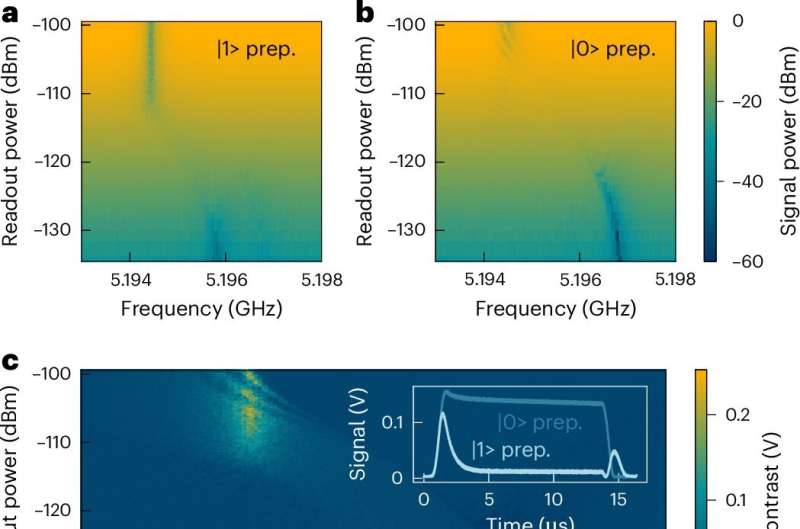by Rigetti Computing Inc.
Joint research demonstrating the ability to readout superconducting qubits with an optical transducer was published in Nature Physics.
Quantum computing has the potential to drive transformative breakthroughs in fields such as advanced material design, artificial intelligence, and drug discovery. Of the quantum computing modalities, superconducting qubits are a leading platform towards realizing a practical quantum computer given their fast gate speeds and ability to leverage existing semiconductor industry manufacturing techniques.
However, fault-tolerant quantum computing will likely require 10,000 to a million physical qubits. The sheer amount of wiring, amplifiers and microwave components required to operate such large numbers of qubits far exceeds the capacity of modern-day dilution refrigerators, a core component of a superconducting quantum computing system, in terms of both space and passive heat load.
A potential solution to this problem may be to replace coaxial cables and other cryogenic components with optical fibers, which have a considerably smaller footprint and negligible thermal conductivity. The challenge lies in converting the microwave signals used to control qubits into infrared light that can be transmitted through fiber.

This is where microwave-to-optical transduction comes into play, a field dedicated to the coherent conversion of microwave photons to optical photons. QphoX, a Dutch quantum technology startup, has developed transducers with piezo-optomechanical technology that are capable of performing this conversion, forming an interface between superconducting qubits and fiber-optics.
To demonstrate the potential of this technology, researchers from the companies QphoX, Rigetti and Qblox connected a transducer to a superconducting qubit, with the goal of measuring its state using light transmitted through an optical fiber. Remarkably, it was discovered that not only is the transducer capable of converting the signal that reads out the qubit, but that the qubit can also be sufficiently protected from decoherence introduced by thermal noise or stray optical photons from the transducer during operation.
“Microwave-to-optics transduction is a rapidly emerging technology with far-reaching implications for quantum computing. Our work demonstrates that transducers are now ready to interface with superconducting qubit technology. This is an exciting and crucial demonstration, with the potential for this technology being far-reaching and potentially transformative for the development of quantum computers,” says Dr. Thierry van Thiel, lead author of the work and Lead Quantum Engineer at QphoX.
“Developing more efficient ways to design our systems is key as we work towards fault tolerance. This innovative, scalable approach to qubit signal processing is the result of our strong partnerships with QphoX and Qblox and showcases the value of having a modular technology stack. By allowing our partners to integrate their technology with ours, we are able to discover creative ways to solve long-standing engineering challenges,” says Dr. Subodh Kulkarni, Rigetti CEO.
“Realizing industrial-scale quantum computers comes with solving several critical bottlenecks. Many of these lie in the scalability of the readout and control of qubits. As Qblox is entirely focused on exactly this theme, we are proud to be part of this pivotal demonstration that shows that QphoX microwave-to-optical transducers are a solid route to scalable quantum computing. We look forward to the next steps with Rigetti and QphoX to scale up this technology,” says Dr. Niels Bultink, Qblox CEO.
More information:
T. C. van Thiel et al, Optical readout of a superconducting qubit using a piezo-optomechanical transducer, Nature Physics (2025). DOI: 10.1038/s41567-024-02742-3
Provided by
Rigetti Computing Inc.
Citation:
Microwave-to-optics transduction: Research demonstrates readout technique for superconducting qubits (2025, February 20)
retrieved 22 February 2025
from
This document is subject to copyright. Apart from any fair dealing for the purpose of private study or research, no
part may be reproduced without the written permission. The content is provided for information purposes only.

